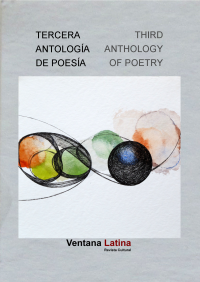Mythology and popular religiosity in Brazil: stories of the saints past and present
Translated by Ellen Donnison
The French publishing house L’Harmattan recently published Une Mythologie Brésilienne (A Brazilian Mythology), a study of popular religiosity in northeast Brazil based on oral literature and the history of the saints. The author, José Maria Tavares de Andrade, is a Brazilian anthropologist who divides his time between his native Brazil and France. He kindly agreed to answer our questions whilst attending a series of conferences on this side of the Atlantic.
Ventana Latina: What led you to study Brazilian religiosity?
José Maria Tavares: My study of popular religiosity in Brazil was inspired by a research project in ethno-musicology called ‘Popular Religious Music’, undertaken by the Department of Cultural Extension at the Federal University of Pernambuco in Recife. After being destroyed by the military government in a coup d’état in 1964, the department was reopened by Hermilio Borba Filho and was later taken over by Ariano Suassuna, both of whom were authors and playwrights. From this research a musical movement named Armorial Movement was born, directed by Suassuna. The results from the University’s ethnographic work consisted of reports incorporating monographs, which focused on the oldest types of music within those popular cults that worship saints. From these results came the dissertation for my master’s in Sociology and Linguistics and also the PhD thesis on which I based my book.
VL: How do you differentiate between religion and popular religiosity? How has religion from the colonial civilization been integrated into Brazilian towns?
JMT: Within both concepts we can trace a line that leads us on the one hand to religion in institutional terms and on the other hand, non-institutional manifestations. Within religion we encounter dogmas, a hierarchy and specialized actors. In complete contrast we find within Brazil, like all of Latin America, the popular religious-magic beliefs and practices, many of them centring on devotion to the saints. The colonial civilization banned and discredited the gods, beliefs and rituals of the Amerindians and Africans; therefore the term ‘religiosity’ in common language has become a concept of distinction between institutional and non-institutional poles. Since the influence of Iberian civilization on the Brazilian population, local elements of the Amerindians together with the influences of Africans, brought over as slaves to work on sugar cane plantations, have been reinterpreted according to the writings of the Spanish and Portuguese Roman Catholic Church. The message was adapted as much as possible within the context of a developing society with limited horizons. The non-violent evangelical message is an example of the values from the Sacred Scriptures that were accepted by the victims of colonial violence.
VL: What is the object of your research?
JMT: The initial and empirical objective has been to discover a type of oral literature within myths, ethnographic stories and narratives that circulate between people of the rural world, in relation to life, death and the ‘canonization’ of the saints of popular religiosity. In the absence of the written word or within the contexts of illiterate native cultures, it is oral speech that conserves and passes on information and values, from one generation to the next. My hypothesis aims to explore the mythological explanation behind these narratives as a basis and legitimation of the beliefs and the magic-religious practices, which are not institutionalised in the New World. Mythology reveals the fundamentals of religiosity within the context of popular culture. What’s interesting is that this data was documented without the need to ask questions: at the end of the investigation about religious music and the cults of the saints, the people spontaneously told us these ‘estórias’ (tales) with enthusiasm.
VL: How would you define mythology and the myth? Are myths the histories of the saints?
JMT: The term ‘mythology’ is frequently used alongside narratives that explain the origin of things outside the history of a period, such as classical myths according to the ancient Greeks or Romans or within the mythologies of indigenous towns. However ‘myth’ in the current language and in the press is often treated as equivalent to the imagination or to a lie. Mythology in ethnological terms, and how I use it in my title, is the study of those narratives that function as an explanation of the origins of man’s existence within the world, through fundamental events and characters. Yes, the content of the saints’ stories is equivalent to the explanations of mythological thought. These stories invert the chronological order that makes sense of an attempt at cultural domination by the colonizers and missionaries, whose messages and rituals couldn’t be decoded in Latin, Portuguese or Spanish. Historically the images and rituals of the saints came later but from a cultural point of view; to the local populations it’s the other way around: a local lives, dies and is later discovered to be the body of a saint. In this way the origins and devotions of the saints became understandable, accepted and legitimised within popular culture.
VL: What is a hero? Can you define the different types of heroes/saints that one encounters in these stories?
JMT: In general a hero is a man with achievements or virtues, but there are many types of heroes that exist. The model of an epic and violent hero, widely recounted in Europe, could not be accepted in that context of colonial violence. The stories of the saints allowed a transformation of life’s violent heroes into non-violent ones. Severino dos Ramos and la Senhora dos Prazeres had to repent for their violence in order to become saints. One has to finally recognize that the internal logic of the models from narrative structures continues an ethical criterion: there is no salvation when violence is present. Some saints, including those without personal merits, could be canonized for their religiosity like victims of institutional violence or for the fatality of their living conditions. Like in René Girard’s La Violencia y lo Sagrado (The Violence and the Sacred), we end up classifying the saints as three types of heroes: violent, semi-violent and non-violent.
VL: What conclusions did you draw from your studies of the symbolic system within la Mata and el Sertão?
JMT: We drew conclusions based on the common elements of the two symbolic systems that founded and legitimized the beliefs and the magic-religious practices. Throughout these narratives religiosity channels saints and founds sacred places, centres of pilgrimage. In la Mata, the zone near the Atlantic coast, five of the seven narratives that we studied are histories of patron saints at centres of pilgrimage; also five out of seven narratives within el Sertão elaborate a certain model of communal life. The difference from la Mata is that el Sertão speak of a population’s density being greatly reduced because people are settling down in vast rural zones. Furthermore the cults of the saints (the groups that practice funeral ceremonies and whose canticles and practices of self-flagellation) are currently disappearing just like religious dance. Also one has to remember that the city of Saint Brígida was born out of a movement by peasants in reaction to the messianic leader, Pedro Bastista.
VL: Where within today’s Brazil and Latin America can one say mythology is alive?
JMT: Not only among the indigenous people and their descendants but also within Brazilian and Latin American popular culture. ‘Savage thought’, according to Claude Lévi-Strauss, is the cognition fundamental to humanity; a thought or vision of the world that resolves the diverse relative antinomies of the relationships that men establish with themselves and nature. The popular representation finds the solution to anthropological antagonisms between life/death, good/bad, individuality/community, profane/sacred, as the sacred is not a part of reality but a form of interpretation for mankind. In this way the Brazilian mythology that establishes religiosity and popular culture is born. In the beautiful countries of Latin America, one will be able to identify, in the same way, using this methodology which bridges the gap between anthropology and semiotics, the appropriation and reinterpretation of cultural components which result in popular cultures, despite the political domination and economy of colonial and neo-colonial origins.




 Copyright © 2024
Copyright © 2024